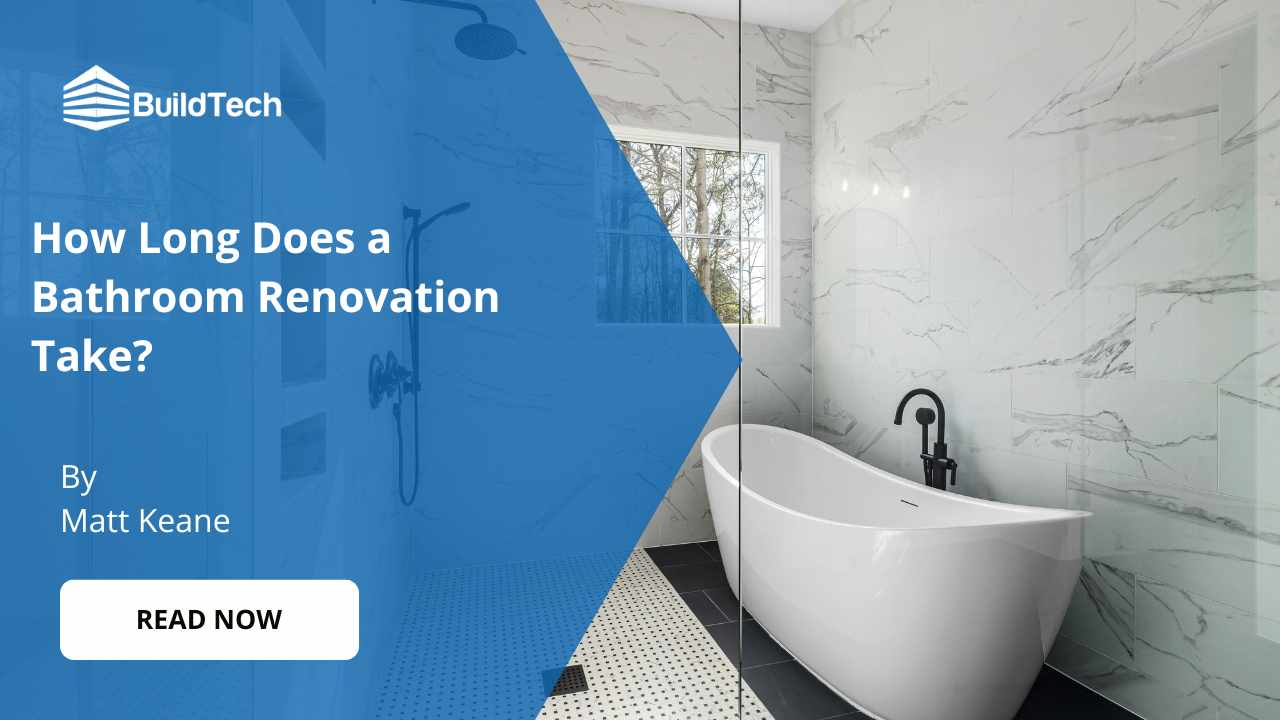Looking to give your kitchen a makeover but unsure where to begin? We've been there, and we understand how overwhelming it can feel. With assistance from Kate Guinness, an expert interior designer, we've completed intensive research on the proper sequence for a kitchen remodel.
From tearing down old fixtures to adding finishing touches, our article provides you with a detailed roadmap for every step of your kitchen renovation journey. Ready to build your dream kitchen? Let's get started!
Key Takeaways
- Before starting a kitchen remodel, it is important to create a budget, visualise your desired outcome, choose the right appliances, and measure the layout.
- The remodeling process typically starts with planning and preparation, followed by demolition and structural work.
- During demolition and structural work, old fixtures are torn out, plumbing and electrical systems are assessed and adjusted as needed, and the structure of the kitchen is inspected or reinforced if necessary.
- After that, finishing touches such as installing new walls, ceilings, flooring, cabinets, countertops, and backsplashes are done. New appliances and fixtures are brought in.
- Finally, add some final touches, like painting the walls and adding decorative elements.
Planning and Preparation
To begin the kitchen remodel, we first need to create a budget and visualise the desired outcome, followed by choosing appliances and carefully measuring and planning the layout.
Make a budget
First, let's talk about money. We need to know how much we can spend on our kitchen remodel. This is called a budget. A budget helps us decide what to buy and what not to buy. It's important to keep track of all costs, big or small, so no surprises pop up later down the road.
Consider the cost of new appliances, cabinets, paint, and more! Be wise with your choices and aim for value over costly trends that may go out of style quickly.
Visualise your desired outcome
To get started with your kitchen remodel, it's essential to visualise your desired outcome. This means taking the time to imagine how you want your new kitchen to look and function.
Consider factors such as layout, style, and the overall aesthetic you want to achieve. Think about how you use your kitchen and what features are most important to you. Do you dream of a spacious island for entertaining or sleek cabinets for ample storage? By visualising your desired outcome, you can better communicate your vision to the professionals who will be helping with the renovation process.
Remember that proper planning is key throughout this stage. Take into account the existing elements in your kitchen that you'd like to change and those that should stay intact. Create a list of everything currently in your kitchen so that nothing gets overlooked during the redesign process.
Choose your appliances
When renovating your kitchen, selecting the right appliances is an important step. Here are some tips to help you choose the right appliances for your new kitchen:
- Consider your needs: Think about how you use your kitchen and what appliances would best suit your lifestyle. Do you need a large fridge for a large family? Would a double oven be useful for cooking multiple dishes at once?
- Research different brands and models: Look into different appliance brands and models to find ones that have good reviews and fit within your budget. Take note of their features, such as energy efficiency and special functions.
- Determine your budget: Set a budget for your appliances before you start shopping. This will help you narrow down your options and ensure that you don't overspend.
- Measure the space: Before purchasing any appliances, measure the space in your kitchen to make sure they will fit properly. Consider the dimensions of each appliance, including height, width, and depth.
- Coordinate finishes: If you want a cohesive look in your kitchen, consider choosing appliances with matching finishes. Stainless steel is a popular option as it goes well with many different styles.
- Consider energy efficiency: Energy-efficient appliances can help reduce your utility bills over time. Look for appliances with the Energy Star label, which indicates that they meet certain efficiency standards.
Measure and plan the layout
To ensure a successful kitchen remodel, it's important to measure and plan the layout carefully. Here's what you need to do:
- Take accurate measurements of your kitchen space.
- Consider the existing plumbing and electrical connections, as they may impact the layout.
- Determine where you want your appliances, such as the fridge, stove, and dishwasher, to be placed in relation to each other.
- Think about workflow and how you move around in the kitchen when deciding on the layout.
- Consider factors like countertop space, storage needs, and seating areas when planning the layout.
- Sketch out different design options or use digital tools to visualise how the layout will look.
Demolition and Structural Work
During this stage, we tear out and remove old fixtures, make any necessary changes to plumbing and electrical systems, and inspect or reinforce the structure if needed. Find out more about the crucial steps of demolition and structural work in a kitchen remodel by clicking below.
Tear out and remove old fixtures
To begin your kitchen remodel, it's time to tear out and remove the old fixtures. Here's what you need to do:
- Clear out the area: Remove any furniture, appliances, and personal items from the kitchen.
- Disconnect utilities: Turn off the water supply and disconnect any gas or electrical connections.
- Remove cabinets: Start by removing the cabinet doors, and then carefully take out the cabinets themselves.
- Take out countertops: Use a crowbar to pry off the old countertops, being careful not to damage the walls or cabinets.
- Demolish walls if necessary: If you're changing the layout of your kitchen, this is when you would tear down walls or create new openings.
- Remove flooring: Take up the old flooring material, whether it's tiles, carpeting, or hardwood.
- Dispose of debris: Properly dispose of all demolished materials and debris from your kitchen.
Make any necessary changes to plumbing and electrical systems
Now it's time to take a look at your plumbing and electrical systems. Here are some important things to consider:
- Hire a professional plumber and electrician to assess your current systems and make any necessary changes or upgrades.
- Determine if you need to add additional outlets or relocate existing ones for better functionality.
- Plan the placement of water lines and drains based on your new kitchen design.
- Check the condition of your pipes and wiring to ensure they are up to code and in good working condition.
- Consider installing energy - efficient fixtures and appliances to reduce water and electricity usage.
- Coordinate with your contractors to schedule the necessary work in coordination with other remodelling tasks.
Inspect and reinforce the structure if needed
Once the old fixtures have been torn out and removed, it's important to inspect the structure of your kitchen. This step is crucial because it allows you to identify any potential structural issues that may need to be addressed before proceeding with the remodel.
If there are any weak or damaged areas, reinforcing them now will ensure a stronger and safer kitchen in the long run. It's always best to get a professional inspection done at this stage, as they can provide expert advice on what needs to be reinforced or repaired.
Taking care of any necessary structural work early on will set a solid foundation for the rest of your kitchen renovation journey.
Finishing and Installation
In this stage, we will install new walls, ceilings, and flooring. We will also be putting in the cabinets, countertops, and backsplash. Additionally, we'll bring in new appliances and fixtures to complete the look of your newly remodelled kitchen.
Install new walls, ceilings, and flooring
We will install new walls, ceilings, and flooring in your kitchen renovation. Here are the steps:
- Remove any existing walls, ceilings, or flooring that need to be replaced.
- Prepare the space by cleaning it thoroughly and making any necessary repairs.
- Install new drywall on the walls, ensuring a smooth and even surface.
- Apply a fresh coat of paint or wallpaper to the walls according to your chosen design.
- Install ceiling tiles or panels to create a clean and modern look.
- Choose durable and stylish flooring options such as tile, laminate, or hardwood.
- Lay down the new flooring carefully, making sure it is properly aligned and secure.
Install cabinets, countertops, and backsplash
One important step in remodelling a kitchen is installing cabinets, countertops, and a backsplash. This is where you can really start to see your new kitchen come together. Here's what you need to know:
- Choose the style and materials for your cabinets, countertops, and backsplash that fit your desired look and budget.
- Measure carefully to ensure that everything will fit properly in your kitchen space.
- Begin by installing the cabinets first. Start with the upper cabinets, securing them to the wall studs with screws. Then install the lower cabinets, making sure they are level and secure.
- Once the cabinets are in place, it's time to install the countertops. Measure and cut them to fit your cabinet layout. Use adhesive or screws to secure them to the cabinets.
- Finally, install the backsplash. This can be tiles, a sheet of material, or even paint, depending on your preference. Apply adhesive or mortar, and then attach each piece according to your chosen design.
Bring in new appliances and fixtures
Now it's time to bring in the new appliances and fixtures for your kitchen remodel. Here are the steps to follow:
- Purchase and deliver the new appliances and fixtures.
- Make sure they are properly installed according to manufacturer instructions.
- Connect the electrical and plumbing systems as needed.
- Test each appliance to ensure it is working correctly.
- Install any necessary finishes, such as trim or hardware, on the appliances and fixtures.
Final Touches and Completion
We paint the walls and add decorative elements to bring a fresh look to the kitchen. We finish any remaining installations, such as lighting fixtures or window treatments. Finally, we celebrate the completion of our beautifully remodelled kitchen.
Paint and decorate the space
Now it's time to add the finishing touches to your newly remodelled kitchen! Here are the steps to paint and decorate the space:
- Choose a colour scheme that complements your kitchen design. Consider using neutral tones for a timeless look or vibrant colours for a bold statement.
- Prep the walls by cleaning them thoroughly and repairing any cracks or holes. Sand the surfaces if necessary to ensure a smooth finish.
- Apply a primer to the walls before painting to create a uniform base and improve paint adhesion.
- Use high-quality paint in a finish that suits your kitchen's needs, such as satin or semi-gloss, for easier cleaning.
- Start by cutting in around edges and corners with a brush, then use a roller to apply paint in even strokes on larger areas.
- Allow the first coat of paint to dry completely before applying additional coats if needed. Follow the manufacturer's instructions for drying times.
- Once the walls are painted, it's time to add decorative elements. Hang artwork, family photos, or shelves with decorative items that reflect your style and personality.
- Consider adding window treatments like curtains or blinds to provide privacy and enhance the overall look of the kitchen.
- Don't forget about lighting! Install new light fixtures or update existing ones to create ambiance and highlight key areas of your kitchen.
- Finally, accessorise with plants, colourful dishes, and other decorative items that bring life and character to your new kitchen space.
Finalise any remaining installations
Before celebrating your newly remodelled kitchen, there are a few remaining installations to complete. Here's what you need to do:
- Install lighting fixtures: Choose the perfect lighting for your kitchen, whether it's pendant lights, recessed lighting, or under-cabinet lights. Make sure they are properly installed and wired.
- Connect plumbing fixtures: Install the sink faucet, dishwasher, and any other plumbing fixtures that haven't been connected yet. Double-check for leaks and ensure everything is working properly.
- Hang window treatments: Add curtains or blinds to your kitchen windows for privacy and style. Measure the windows accurately and choose window treatments that suit your design preferences.
- Mount hardware: Attach handles, knobs, and pulls to your cabinets and drawers. This small detail can make a big difference in the overall look of your kitchen.
- Test appliances: Make sure all your new appliances are functioning correctly. Test each one individually to ensure they are working as expected.
- Clean up: Give your newly remodelled kitchen a thorough cleaning before moving in all your utensils, cookware, and groceries. Wipe down countertops, sweep or vacuum the floors, and remove any dust or debris from construction.
Celebrate your newly remodelled kitchen
Once your kitchen remodel is complete, it's time to celebrate and enjoy your newly transformed space. Take a moment to appreciate all the hard work that went into planning and executing the renovation project.
Invite friends and family over for a meal or gathering to show off your beautiful new kitchen. Cook a special meal using your brand-new appliances and enjoy the enhanced functionality and aesthetics of your upgraded space.
With proper planning and attention to detail, you can create a kitchen that not only meets your needs but also becomes the heart of your home. So go ahead, raise a glass, and toast your newly remodelled kitchen!
Ready to Transform Your Kitchen? Start Here!
In conclusion, when remodelling a kitchen, it is important to plan and prepare first. Make a budget, visualise your desired outcome, choose your appliances, and measure the layout. Then, proceed with demolition and structural work by tearing out old fixtures and making necessary changes to plumbing and electrical systems.
Finally, finish off the remodel by installing new walls, cabinets, countertops, and flooring. Don't forget the final touches like painting and decorating before celebrating your newly remodelled kitchen.


















